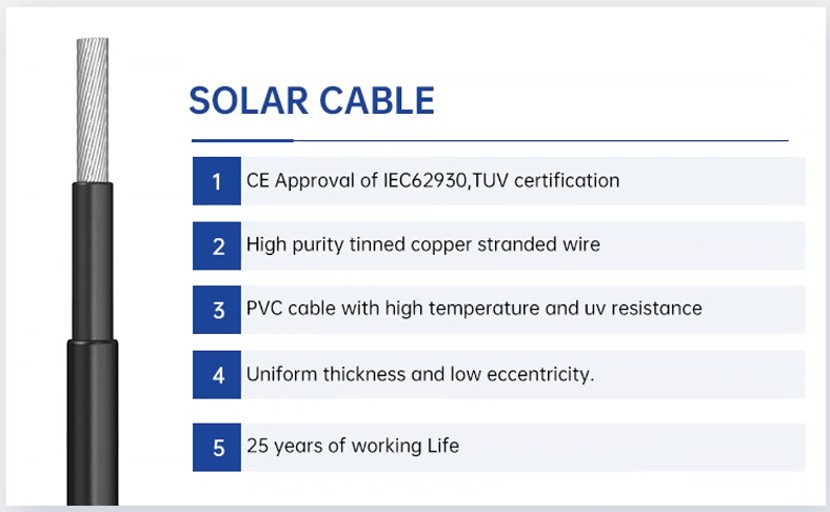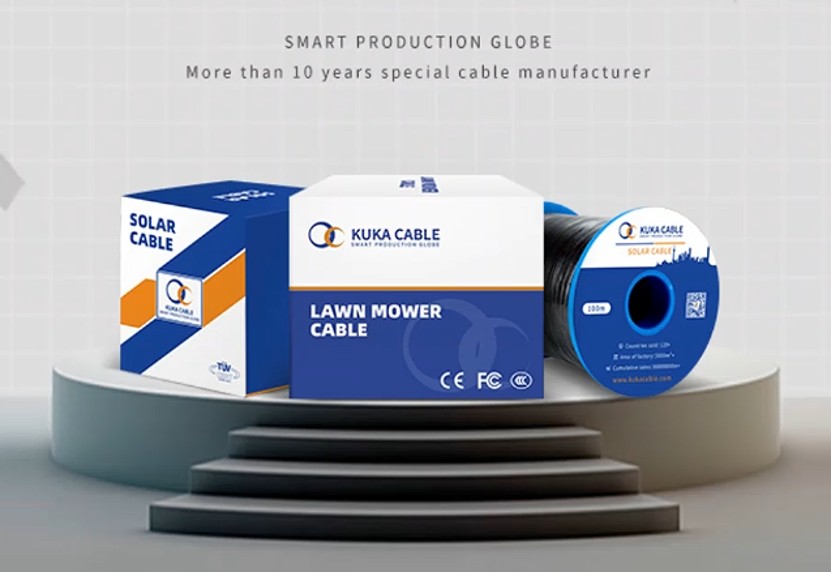In the world of renewable energy, solar power stands out as one of the most promising and rapidly expanding sources of clean electricity. As solar energy systems become increasingly prevalent, so does the need for specialized components, including solar cable. But what sets solar cables apart from their conventional counterparts, and why is it crucial to use the right type of cable for solar installations? Let’s delve into the intricacies of solar cable and explore its distinctions from normal cables.
Introduction to Solar Cable
Solar cables, also known as DC solar cable, are specifically designed to connect photovoltaic (PV) panels to the electrical components of a solar power system. These cables play a pivotal role in transmitting the direct current (DC) generated by solar panels to the inverter, where it is converted into alternating current (AC) for use in homes, businesses, or the grid.
Construction and Composition
One of the primary disparities between solar cables and normal cables lies in their construction and composition. Solar cables are engineered with materials that are optimized for outdoor use and exposure to sunlight, extreme temperatures, and weather conditions. They are typically insulated with durable polymers such as cross-linked polyethylene (XLPE) or ethylene propylene rubber (EPR), which provide excellent resistance to UV radiation and harsh environmental elements.
In contrast, traditional electrical cables may not possess the same level of resilience to outdoor conditions. While they may be suitable for indoor applications or protected environments, they may degrade rapidly when exposed to sunlight and moisture, compromising the safety and performance of the solar power system.
Voltage Ratings and Insulation Properties
Another critical distinction between solar cables and normal cables lies in their voltage ratings and insulation properties. DC solar cables are specifically designed to handle the high DC voltages generated by solar panels efficiently. They are engineered to minimize power losses and ensure the safe transmission of electricity over long distances within the solar array.
Solar cables are available in various voltage ratings, including 600V, 1000V, and even higher ratings for utility-scale solar installations. These cables are meticulously tested and certified to meet industry standards for electrical performance and safety, providing peace of mind to solar installers and system owners.
Conversely, conventional electrical cables may not be optimized for DC applications or have the necessary insulation properties to withstand the unique challenges posed by solar installations. Using standard cables in a solar power system can lead to increased resistive losses, overheating, and potential safety hazards, underscoring the importance of selecting the right type of cable for the job.

TUV and UL Certifications
When sourcing solar cables for a photovoltaic system, it is essential to look for products that have been certified by reputable testing organizations such as TUV Rheinland or Underwriters Laboratories (UL). These certifications validate that the cables meet stringent quality and safety standards for use in solar installations.
TUV and UL certifications encompass rigorous testing procedures to evaluate the electrical performance, mechanical durability, and fire resistance of solar cables. By choosing certified cables, solar installers can ensure compliance with regulatory requirements and mitigate risks associated with substandard components.
Cross-Sectional Area and Current Carrying Capacity
The cross-sectional area of a cable directly impacts its current carrying capacity and power transmission capabilities. Solar cables are available in a range of sizes, with larger cross-sectional areas designed to accommodate higher currents without excessive voltage drops.
Selecting the appropriate cross-sectional area for solar cables is crucial to optimize the efficiency and performance of the solar power system. Undersized cables can lead to voltage drop issues, increased power losses, and decreased energy yields, diminishing the overall effectiveness of the solar installation.
In contrast, normal cables may not offer the same breadth of options for cross-sectional areas tailored to the requirements of solar applications. Using undersized cables can compromise the safety and reliability of the system, highlighting the necessity of utilizing solar-specific cables for photovoltaic installations.
Durability and Longevity
Solar cables are engineered to withstand the demanding conditions of outdoor environments and prolonged exposure to sunlight, moisture, and temperature fluctuations. They are constructed with robust materials and insulation layers that resist degradation and maintain electrical integrity over extended periods.
Furthermore, solar cables are often equipped with features such as double insulation and enhanced mechanical strength to enhance their durability and longevity in harsh operating conditions. These attributes contribute to the reliability and longevity of solar power systems, reducing the need for maintenance and replacement.
Normal cables, while suitable for conventional electrical applications, may lack the specialized attributes required to endure the rigors of solar installations. Their inferior resistance to UV radiation, moisture ingress, and mechanical stress can lead to premature deterioration and system failures, underscoring the importance of investing in high-quality solar cables for long-term performance and reliability.
Conclusion
In conclusion, the disparity between solar cables and normal cables extends beyond mere nomenclature, encompassing a myriad of design considerations, performance attributes, and regulatory standards. Solar cables are purpose-built for the unique requirements of photovoltaic systems, offering superior durability, electrical efficiency, and safety compared to their conventional counterparts.
By understanding the differences between solar cables and normal cables, solar installers and system owners can make informed decisions when selecting components for their solar power projects. Prioritizing the use of certified solar cables with appropriate voltage ratings, cross-sectional areas, and insulation properties is essential to optimize the performance, reliability, and longevity of solar installations in the pursuit of clean, sustainable energy.





